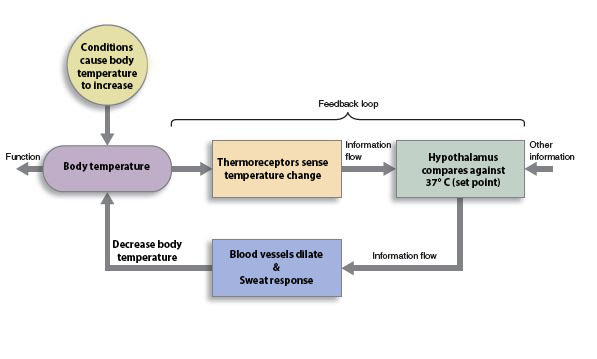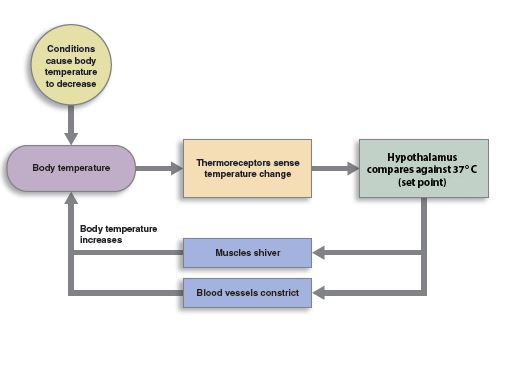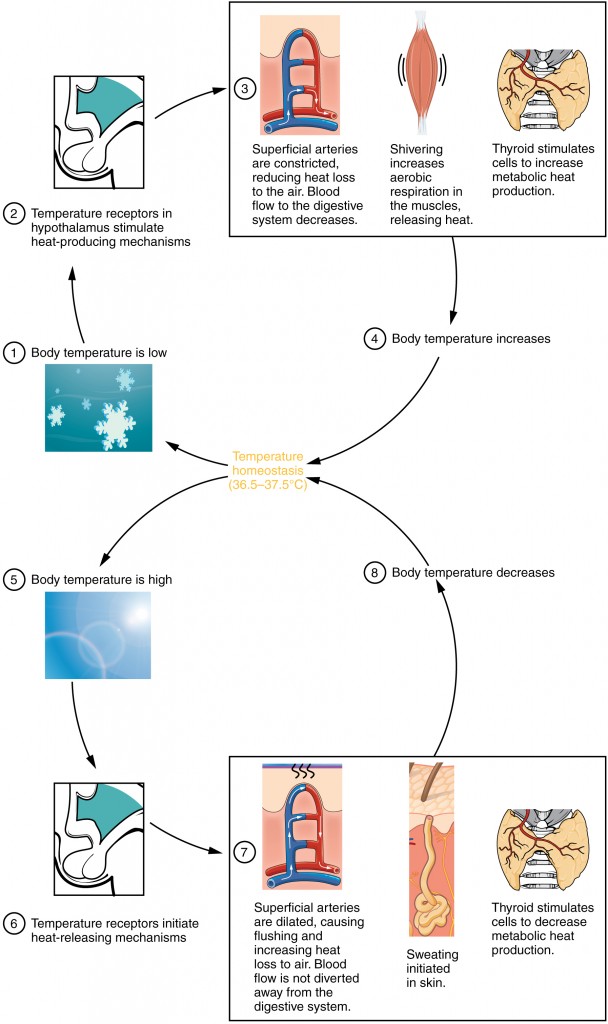Thermoregulation
Objective 8.8
8.8.1 Explain the role of skin in the maintenance of body temperature.
The mechanism of thermoregulation is different depending on whether the body needs cooling or heating. Receptors are located in the core; they sense the temperature of blood. The control center is the hypothalamus, a part of the brain (Unit 11). There are several effectors. The skin is a major effector in the homeostatic loop controlling body temperature. We have seen these same feedback loop graphics in Unit 1 demonstrating both high body temperature and low body temperature responses.
If the body wishes to shed heat to maintain homeostasis, sweat glands release fluid to the surface to cool the skin by evaporation. At the same time, blood vessels dilate and shed more heat to the environment. This makes the skin appear pink or even red (“flushed”) in light-skinned people.

The same reaction can happen in response to emotional events, and is called “blushing”.
When the body temperature is low, thermoreceptors in the skin are activated. A signal is sent to the hypothalamus region of the brain to conserve heat. Sweat glands stop production, and blood vessels constrict. Blood stays internal to the dermis, behind the insulating layer of fat in the subcutaneous layer. The skin may appear pale or even blue as blood is trapped deep in the dermis and in the subcutaneous region.

We have two primary thermoregulatory mechanisms, both operating on the living dermal layer:
- Circulation
- Sweating
With circulation, blood vessels can dilate to shed heat or constrict to conserve heat. Sweat glands (apocrine and eccrine) shed heat by evaporation (540 calories/gram). We have a few additional resources as well to help with thermoregulation. Arrector pili contract to cause “goose bumps.” In animals with fur, hairs trap air and provide insulation. Adipose tissue in subcutaneous layer insulates blood vessels.

Media Attributions
- U01-047 high body temp feedback loop © Open Learning Initiative adapted by Justin Burr is licensed under a CC BY-NC-SA (Attribution NonCommercial ShareAlike) license
- U01-045 Low Temp Feedback Loop © Open Learning Initiative adapted by Justin Burr is licensed under a CC BY-NC-SA (Attribution NonCommercial ShareAlike) license
- U08-031 2523_The-Hypothalamus_Controls_Thermoregulation-608×1024 © Betts, J. Gordon; Young, Kelly A.; Wise, James A.; Johnson, Eddie; Poe, Brandon; Kruse, Dean H. Korol, Oksana; Johnson, Jody E.; Womble, Mark & DeSaix, Peter is licensed under a CC BY (Attribution) license

